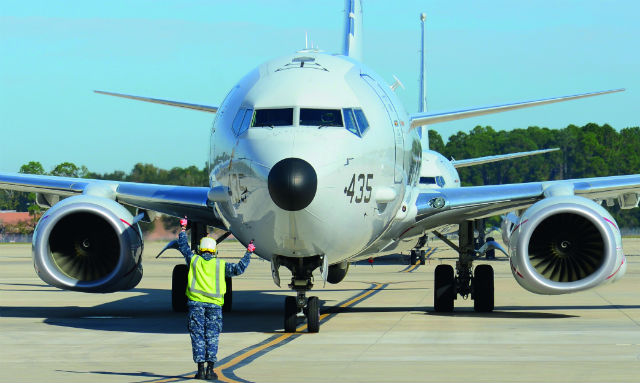Life experience tells us that after making a mistake, it takes guts, humility – or both even – to recognise it and put things right.
Of course, that’s not how UK Prime Minister David Cameron’s government would view the results of the long-awaited Strategic Defence and Security Review (SDSR), released on 23 November.
Five years after it faced stinging criticism for scrapping the Royal Air Force’s incoming Nimrod MRA4 maritime patrol aircraft (MPA), sending the versatile Harrier GR9A into early retirement and trimming the overall number of combat squadrons, Downing Street pre-empted the SDSR’s fiercely-guarded publication.

After long speculation, Number 10 confirmed that the MPA gap will be filled by nine Boeing 737-based P-8 Poseidons, the first of which will report for duty later this decade. The UK’s carrier strike capability will be accelerated, with a second squadron of short take-off and vertical landing F-35Bs to be ready for deployment with Queen Elizabeth-class carriers by 2023. Also, threatened cuts to the Eurofighter Typhoon force have been reversed. By 2025, the RAF will have seven frontline units equipped with the model, which also is to remain in use until at least 2040.
Fears of a repeat of the savage, to-the-bone cuts made during the 2010 SDSR were in the end groundless, and errant past decisions to retire C-130J tactical transports and Sentinel R1 surveillance aircraft were reversed.
There was no hint of a mea culpa from Cameron – after all, who could have foreseen the rise of the Islamic State militant group and Russia’s adversarial stance, which emerged only after the dust had settled from 2010’s axe-wielding? Critics though, would counter that no military that prides itself on being at the top table of capability would ever have opted to throw away battle-proven strike aircraft and maritime patrol assets.
Budget considerations unquestionably won out in the SDSR of 2010, but this time the operational lessons of the ensuing half-decade have helped the UK’s armed forces to win arguments about what the genuinely critical capabilities really are.
At first glance, nothing in the newly-published defence review would seem to raise the alarms of the government’s first attempt. But in another five years, will the investments being made today in deep-ocean surveillance jets, aircraft carriers and replacement nuclear-attack submarines look at odds with the threats facing the nation’s interests?
Source: Flight International



















